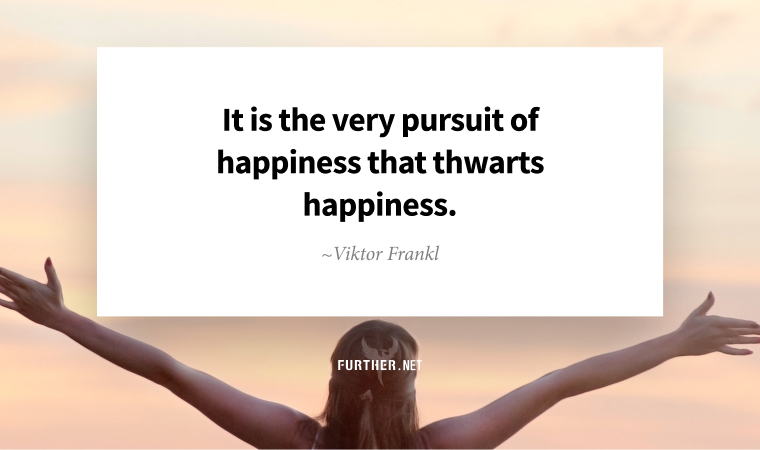
The pursuit of happiness, one of those theoretical inalienable rights, is a favorite topic here at Further. As you might expect from our skeptical generation, we don’t put much stock in fake Buddha quotes like, “There is no path to happiness. Happiness is the path.” In fact, we find happiness a bit overrated.
That said, we’re also at an age where prioritizing positive emotions is both practical and preferable — particularly on the heels of a pandemic and in the face of so much uncertainty.
The trick is to understand that uplifting your life experience isn’t about pursuing anything; it’s about understanding what happiness is (and isn’t) and how to better access that “place.”
The Happiness Boomerang
If you’ve ever set your sights on something you thought would bring you joy, like a trip or a new job, you might have found the reality wasn’t as you’d hoped. You missed the people back home, or the new work environment was toxic from day one.
Having your happiness derailed by an unanticipated event or emotion happens all the time, so much so that social psychologists call it “the boomerang effect.”
It’s like throwing a boomerang. It’s obvious that 99 percent of the time, it’ll come back to you. But sometimes, a treacherous breeze or wind can divert its path and it ends up hitting you. Consequently, those experiences you labeled as positive, often don’t turn out to be.
Research shows that life satisfaction doesn’t necessarily align with what you consider “good.” Instead, you can improve your sense of well-being by better managing your emotional responses.
The Real “Happy Place”
Happiness, like every other state of being, isn’t static. Your emotions are continuously in flux, so accepting that reality is a great place to start.
The happiness boomerang effect claims that these counterproductive effects allow you to better adjust your expectations to seek well-being in the appropriate places. It doesn’t mean giving up. It simply means knowing how to better select the kinds of activities, relationships, and lifestyles you should or shouldn’t get involved in.
In other words, learn how to make better choices for emotional well-being. Thomas Henricks, Ph.D., offers three places to focus on:
- Situations: Look for the sweet spot between anxiety-inducing challenges and boredom-encouraging simplicity (aka, get into a flow state).
- Orientations: Adjust your expectations as you gain new knowledge; stop judging things for what you think they should be, and start focusing on the positive aspects of what they are.
- Interpretations: Put things in today’s context, not what was or would have been.
Real happiness isn’t a path or a destination — it’s an open field of bliss that flourishes when you realize nothing needs to change for everything to be okay.
The Happiness Boomerang Effect (Exploring Your Mind)
